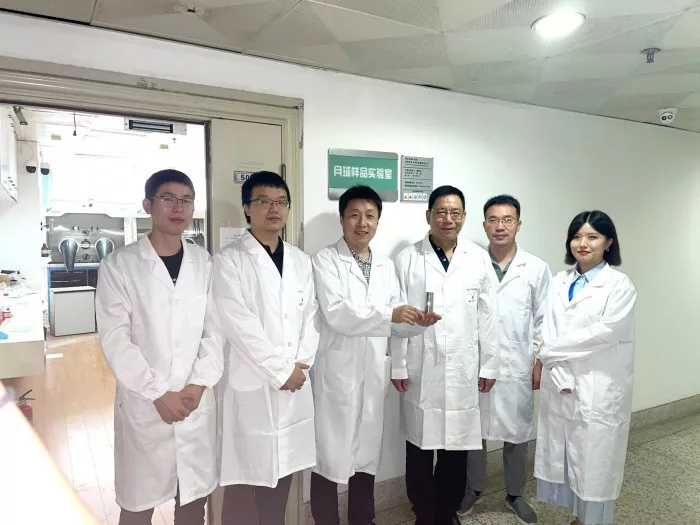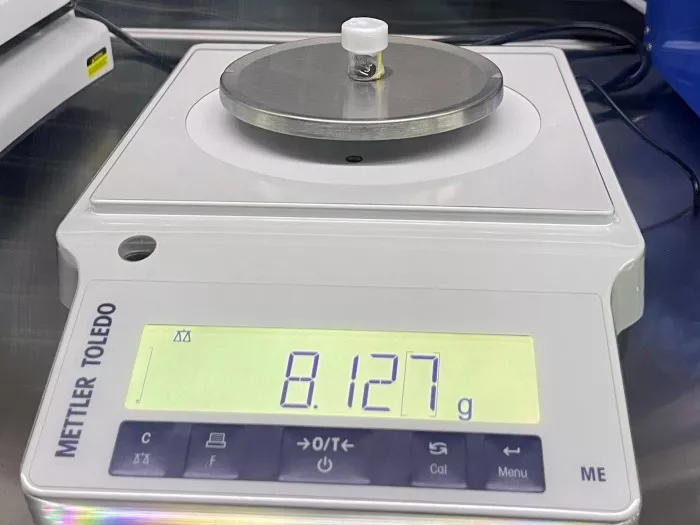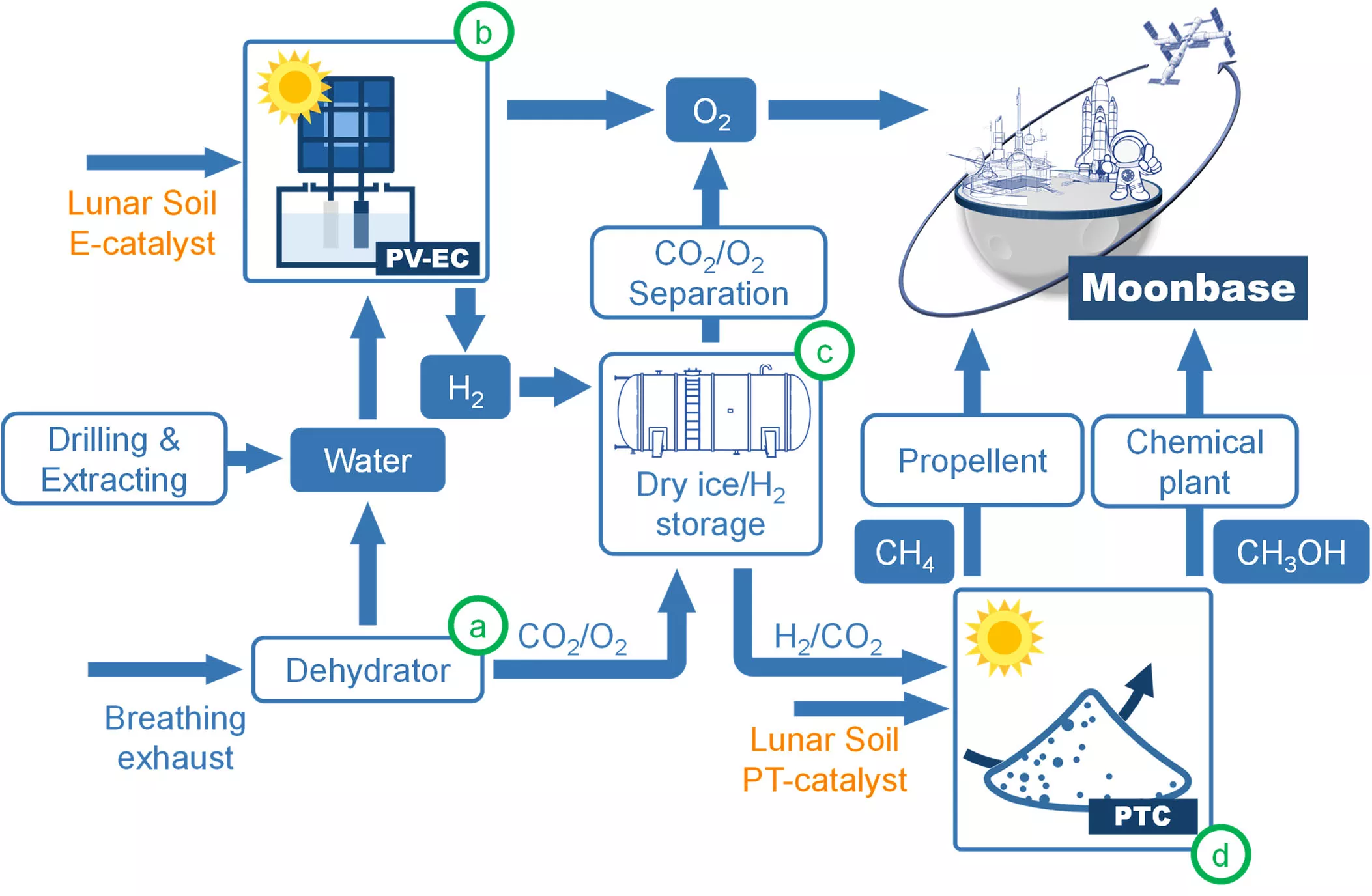
On May 5, the research team of Nanjing University, the Chinese University of Hong Kong (Shenzhen) and the University of science and technology of China published an article in the international academic journal Joule, saying that after detailed analysis of the element and mineral structure of the lunar soil retrieved by Chang'e 5 (hereinafter referred to as Chang'e 5 lunar soil), the team found that the lunar soil contained some active compounds. They can be used as catalysts to convert water and carbon dioxide into oxygen, hydrogen, methane and methanol with the help of sunlight.
Based on this discovery, the team proposed a strategy of using lunar soil for extraterrestrial artificial light synthesis, hoping to lay a material foundation for the realization of a "zero energy consumption" lunar life support system, so as to support lunar exploration, research and travel.

Photo caption: through advanced characterization methods, the team confirmed the surface structure and composition of lunar soil, indicating that lunar soil contains about 24 different crystal minerals and about 13 element components, which have been verified repeatedly.
The element composition and micro nano structure of lunar soil make it have high catalytic performance
Extraterrestrial artificial light synthesis technology refers to the technology that simulates the natural photosynthesis of green plants on the earth and uses sunlight to convert human exhaled carbon dioxide and water resources mined in situ on the moon into oxygen and hydrocarbons. In this process, if there is a catalyst, the conversion efficiency is higher.
Lunar soil is one of the most abundant resources on the moon. In 2021, Nanjing University obtained 1g of chang'e-5 lunar soil. The scientific research team published the results this time used 0.2g of it for research and found some characteristics of lunar soil.
"Chang'e-5 lunar soil comes from the very young basalt on the lunar surface. This mineral is rich in iron, titanium and other catalyst components commonly used in artificial light synthesis. The team used machine learning and other methods to analyze the structure of lunar soil for many times and found that there are about 24 kinds of crystalline minerals in these lunar soil, including 8 kinds of crystalline minerals such as ilmenite, titanium oxide, hydroxyapatite and a variety of iron-based compounds, which can play an important role in artificial light synthesis Good catalytic performance. " Yao Yingfang, a professor at Nanjing University and co-author of the paper, told Science and technology daily.

What is the actual catalytic performance of lunar soil? The research team took lunar soil as the catalytic material for photovoltaic electrolytic water, photocatalytic water decomposition, photocatalytic carbon dioxide reduction and photothermal catalytic carbon dioxide hydrogenation, and found that it has high performance and selectivity in photovoltaic electrolytic water and photothermal catalytic carbon dioxide hydrogenation.
"In these experiments, we applied simulated sunlight, water and carbon dioxide as raw materials, and compared the lunar soil with the simulated lunar soil retrieved from the Apollo program and the basalt on the earth's surface. It was found that in the photovoltaic electrolytic water reaction, the chang'e-5 lunar soil produced the most oxygen and hydrogen. In the photothermal catalytic carbon dioxide hydrogenation reaction, the chang'e-5 lunar soil produced more methane and methanol than others The material should be high. " Yao Yingfang said happily that oxygen can provide life support for mankind, methane is an effective component of rocket propellant, and methanol is an organic chemical raw material.
The study also pointed out that the surface of lunar soil is rich in micropores and vesicles. "The larger the surface area of lunar soil, the more gas it can contact, and the better the catalytic performance. This micro nano structure further improves the catalytic performance of lunar soil." Yao Yingfang said.

Photo caption: through test and analysis, the scientific research team proposed a potential scheme to use lunar soil on the lunar surface to achieve extraterrestrial survival
Further tests will be sought in the space station or lunar spacecraft
Based on the above analysis, the research team proposed the strategies and steps of using lunar soil to realize extraterrestrial artificial photosynthesis according to the lunar environment.
"The extremely low temperature of about - 173 ° C on the moon at night is used to condense and separate carbon dioxide from the air breathed by human beings. Then, the sun light is used to use the lunar soil of Chang'e 5 as an electrocatalyst for water decomposition and a photothermal catalyst for carbon dioxide hydrogenation to convert human exhaled waste gas and water resources mined on the lunar surface into oxygen, hydrogen, methane and methanol." Yao Yingfang said that the use of extraterrestrial artificial light synthesis technology may only need the solar energy, water and lunar soil on the moon to produce oxygen and hydrocarbons. The technology can also realize low energy consumption and efficient energy conversion with the help of the temperature environment of the lunar surface. This provides a potential scheme for establishing an in-situ resource utilization system suitable for the extreme environment of the moon.
Although the catalytic efficiency of lunar soil is lower than that of catalysts available on earth, Yao Yingfang said that the research team will also separate and refine the effective catalytic components in lunar soil, hoping to get better catalytic effect.
However, whether the extraterrestrial artificial light synthesis technology can be realized in the real lunar environment needs to be further verified. Yao Yingfang said that they are striving to carry the extraterrestrial artificial light synthesis system to the Chinese space station next year, or strive to carry the system to the spacecraft of China's lunar exploration program.
"If lunar soil or extracted components from lunar soil can be used as artificial photocatalyst on the moon, the load and cost of spacecraft can be greatly reduced. Maybe local materials can be obtained on the moon in the future to provide life support for astronauts and prepare fuel." Yao Yingfang looks forward to this.